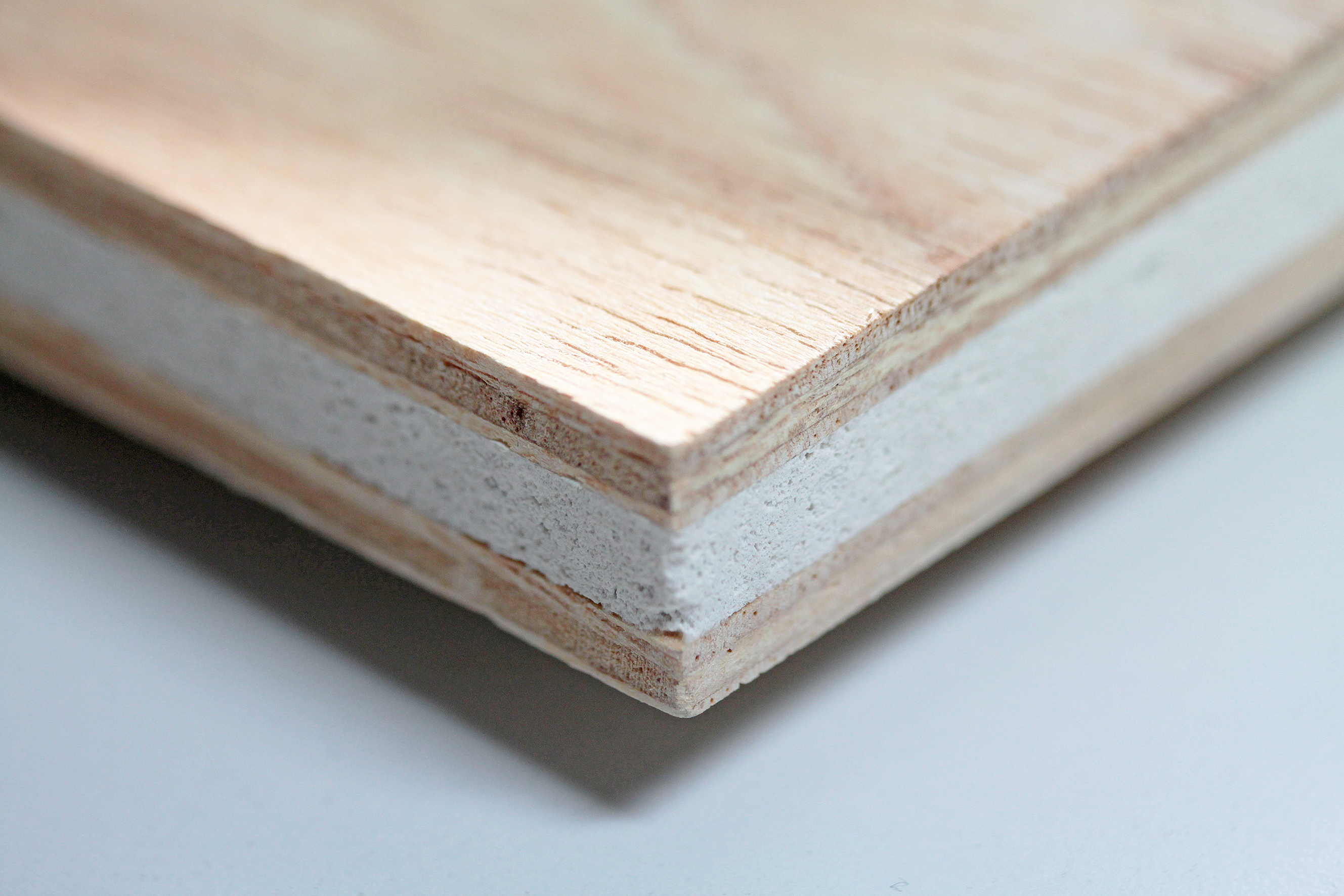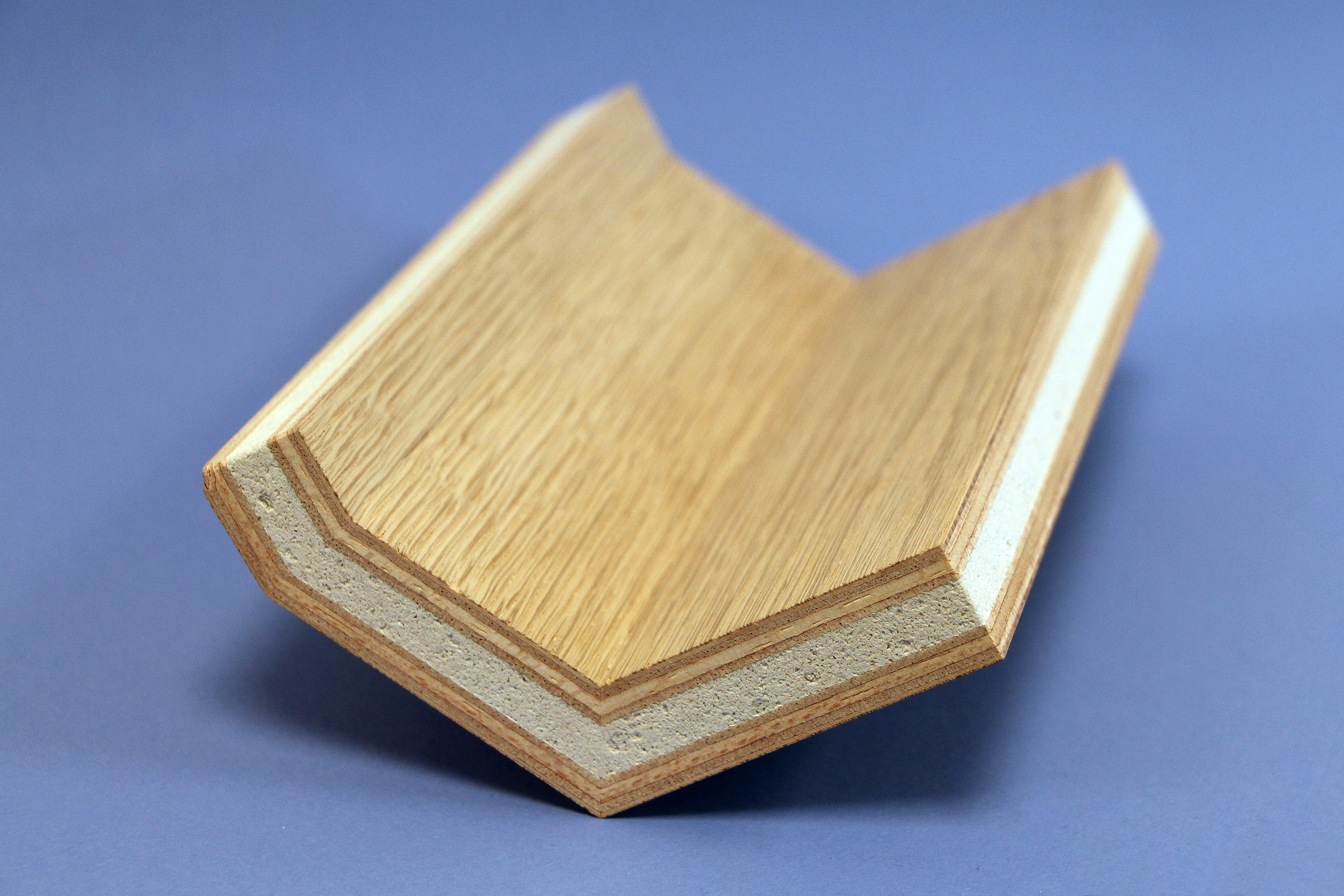Shipbuilding with sustainable materials: Non-combustible wood for interior outfitting
Researchers at the Fraunhofer WKI, in collaboration with Patrick Leleu Furnier GmbH, have characterized and developed a non-combustible lightweight panel made from renewable raw materials. The material conforms to ship standards for fire protection in the interior outfitting of ships. The lightweight panel is not only more environmentally friendly but also easier to work with than conventional inorganic materials. It can, for example, be installed as a cabin wall.


Interest in the utilization of wood and wood-based materials as a sustainable and readily available alternative for interior outfitting in vehicles such as cars, trains or ships is growing. Until now, the flammability of wood – which, in its natural state, is classified as “normally flammable” – has often presented an obstacle to its more widespread use. Solely non-combustible materials such as aluminum or foam glass are permitted for the interior outfitting of ships and yachts.
The result of the testing and characterization of the material at the Fraunhofer WKI and the further development at Patrick Leleu Furnier GmbH is a non-combustible plywood in accordance with the IMO FTP Code 2010 Part 1. “In our project, we pursued the idea of adapting a renewable raw material such as wood to the requirements of fire protection by means of an innovative pretreatment. We were able to upgrade a normally flammable Fuma plywood in such a way that it can be classified as non-combustible in accordance with IMO FTP Code 2010 Part 1,” reports Dr. Torsten Kolb, Project Manager at the Fraunhofer WKI. With the achievement of the project goal, the material can be used in the interior outfitting of cruise ships and yachts.
The advantage of the developed material lies in the utilization of sustainable raw materials as opposed to the inorganic materials customarily used in ship outfitting, such as aluminum, calcium silicate, rock wool and vermiculite. Unlike conventional materials, the lightweight panel can be processed using standard tools for drilling, milling and/or sawing.
The project partner of the Fraunhofer WKI, the company Patrick Leleu Furnier GmbH, had already developed a plywood made from Fuma prior to the start of the project. This plywood had a thickness of 2 to 6 mm and was certified as non-combustible in accordance with the IMO FTP Code Part 1. It was also known that non-combustible foam glass, which is coated with a high-pressure laminate, is used in the interior outfitting of yachts and cruise ships.
“Based on these two items of knowledge, the consortium conceived the idea of coating the foam-glass sheet with several layers of veneer wood, thereby achieving non-combustibility of the material despite the proportion of wood. After a number of trials using waterglass-bonded foam glass, a number of disadvantages emerged, such as inhomogeneity and a long storage time as a result of the large quantity of adhesive involved. Together, we searched for alternatives,” said Dr. Kolb. The researchers found the solution in an epoxy-bonded foam glass. The advantage now was the greater homogeneity of the panels, which allowed the quantity of adhesive to be reduced and the panel to be processed immediately after delivery. With the 8 mm-thick foam glass and the use of veneer plywood, hybrid panels with thicknesses of 12.5 mm, 16.5 mm, 18.5 mm and 25 mm were classified as non-combustible in accordance with IMO FTP Code 2010 Part 1. The wood content thereby increases with the thickness of the panel.
In order to achieve non-combustibility in accordance with IMO FTP Code 2010 Part 1, it was necessary to pre-treat the wood by means of pressure impregnation and to process it to form a sandwich construction. In addition to non-combustibility, mechanical properties were also determined. It was thereby possible to demonstrate that this material has properties similar to those of classic plywood. The emission of volatile organic substances as well as aldehydes and ketones is so low that the requirements of the German Federal Environmental Agency's AgBB scheme are fulfilled.
The composite wood material could also be suitable for use in the construction industry. Here, however, each component must be tested individually for approval in the case of inhomogeneous materials. “We would like to further develop the material in a follow-up project in order for it to be usable in building construction as well,” said Dr. Kolb.
Funding
This research and development project was funded by the German Federal Ministry of Education and Research (BMBF) within the program “Zukunft der Wertschöpfung – Forschung zu Produktion, Dienstleistung und Arbeit” (Future of value creation - Research into production, services and work) and supervised by the project management agency Projektträger Karlsruhe (PTKA). The responsibility for the content of this publication lies with the authors.
The background of the Fraunhofer WKI
Sustainability through the utilization of renewable raw materials has formed the focus at the Fraunhofer WKI for 75 years. The institute, with locations in Braunschweig, Hanover and Wolfsburg, specializes in process engineering, natural-fiber composites, binders and coatings, wood and emission protection, quality assurance of wood products, material and product testing, recycling procedures and the utilization of organic building materials and wood in construction. Virtually all the procedures and materials resulting from the research activities are applied industrially.
Last modified:
 Fraunhofer Institute for Wood Research
Fraunhofer Institute for Wood Research